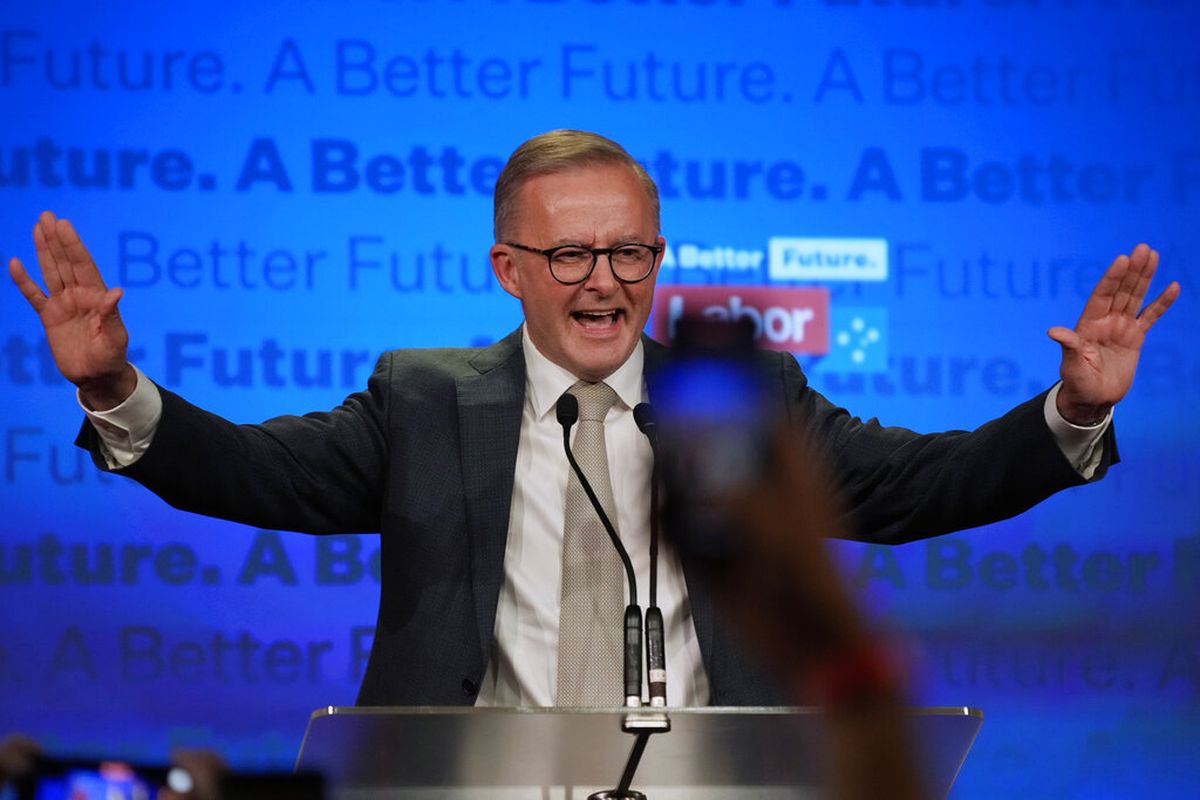Australia Swears in Anthony Albanese as New Prime Minister

KOMPAS.com - Anthony Albanese of the Labor Party was sworn in as Australia’s 31st Prime Minister on Monday, May 23 after defeating Scott Morrison’s conservative coalition.
Australia’s Governor-General David Hurley swore in Albanese at Government House in Canberra. The Governor-General is the head of state Queen Elizabeth II’s representative in Australia.
“I am deeply honored to serve as Australia’s Prime Minister,” Albanese wrote on Twitter following the ceremony. “As Prime Minister, I want to bring people together and lead a government that is as courageous, hard-working, and caring as the Australian people. That work starts today.”
Also sworn in were the new minister for employment Richard Marles, Foreign Minister Penny Wong, Treasurer Jim Chalmers, and Finance Minister Katy Gallagher, who is also attorney general.
Also read: Indonesia, Australia Strengthen Cooperation to Fight Against Terrorism
Albanese and Wong are set to head to Tokyo to meet with the Quad leaders on Wednesday, May 25 with the swearing-in accelerated to facilitate their travel.
The Quad forum, officially called the Quadrilateral Security Dialogue, is a strategic security dialogue between Australia, India, Japan, and the United States.
Albanese said he spoke to US President Joe Biden on Sunday night and was looking forward to meeting him alongside the prime ministers of Japan and India on Tuesday, May 24.
“This visit aligns with what the Albanese Government sees as the three pillars of Australia’s foreign policy: our alliance with the United States, our engagement with the region, and our support for multilateral forums,” Australia’s new prime minister said in a statement.
Last month, the US and Australia raised concerns over China’s security pact with the Soloman Islands.
Not certain whether Labor will form majority government
As of Monday morning, broadcaster ABC listed Labor as having taken 72 seats in the 151-member House of Representatives, an increase of seven from the previous makeup of the lower house of parliament.
Labor needs a total of 76 seats in the House to be able to form a majority government. According to ABC’s projections, 12 seats were still too close to call with around 70 percent of votes counted.
The center-right Coalition, dominated by former Prime Minister Scot Morrison’s Liberal Party, was slated to have 52 seats, down 16.
Also read: Australia to Reopen Borders to Fully Vaccinated Tourists Starting From Feb. 21
The Australian Greens, who previously had one representative in the parliament’s lower house, have won two additional seats. The left-wing environmentalist party is expected to support Albanese if Labor does not achieve a majority.
Independent candidates, some of which could also support Labor, were also scoring well in a number of seats.
Because it’s clear that the Coalition would not be in a position to govern, even with support from independents, Albanese’s early swearing-in was possible on the basis that he is the only viable next prime minister, even if he ends up having to lead a minority government.
Albanese’s Labor, the Greens, and a number of independent candidates ran on platforms that proposed tougher action on climate change. Albanese has said he wants to turn Australia into a “renewable energy superpower.”
Sources: AFP, dpa, Reuters
Simak breaking news dan berita pilihan kami langsung di ponselmu. Pilih saluran andalanmu akses berita Kompas.com WhatsApp Channel : https://www.whatsapp.com/channel/0029VaFPbedBPzjZrk13HO3D. Pastikan kamu sudah install aplikasi WhatsApp ya.






























